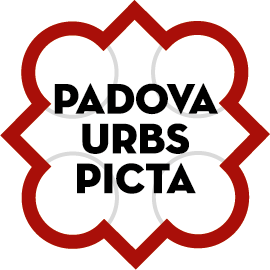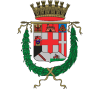“And this our life, away from the crowd, finds tongues in trees, books in streams, sermons in stones, and everywhere good.” William Shakespeare Pleasure, this is the Camposampierese. An area that is at once tradition, devotion, culture, nature, holiday, cycling, Roman centuriazione. The itinerary proposed here will take you on a discovery of the municipalities of the Camposampierese Federation, an area to the north of Padua, characterised by a strong rural vocation. There are two traits that shape the morphology of the area: a linear and geometric landscape, designed at the dawn of the 1st century B.C. and characterising the Roman Graticolato dell’Agro Padovano, and a nature made particularly lush by the numerous resurgence rivers.
The traces of the Roman Centuriazione are gathered in the Borgoricco Museum, a place that collects the genius loci of the area and is housed in a structure designed by architect Aldo Rossi. The countryside, on the other hand, is dominated by the presence of numerous waterways and important nature areas: the river Sile is one example. The Camposampierese is a network of cycle paths and the route we propose is very simple, to be cycled independently and suitable for all legs, even families with children.
This ideal route takes two days.
Starting from Padua you must follow the indications of the Cammino di Sant’Antonio northwards: with the Muson dei Sassi river at your side you will arrive after about 20 km at Camposampiero. The town represents a fundamental junction to fully understand the figure of Saint Anthony, who spent the last weeks of his earthly life in the hermitage on the Noce.The Antonian Sanctuaries of Camposampiero dedicated to him are caskets of an intense history, also expressed in the pictorial decoration at the Noce, the work of a school of 16th-century fresco painters from the city of Padua.In the shadow of the two mediaeval towers, the visit to Camposampiero comes to an end, and once again on the saddle of the bicycle we take the Treviso-Ostiglia cycle track heading east. After passing Loreggia we reach Piombino Dese, the second stop on our itinerary.The cycle path, defined by the Veneto Region as Itinerario 5 (I5), follows an old railway line. Shaded by locust, maple and oak trees, the track is a sort of linear forest interrupted only by the original railway stations, now being upgraded.
A stop in Piombino Dese allows us to recover one of the key identities of this area: the presence of Venetian villas and historic residences. In the heart of the town stands Villa Cornaro, a noble piece of architecture and the first great triumph of Andrea Palladio. The villa is a UNESCO World Heritage Site and is currently being renovated. Returning to the cycle path, we arrive at the Bike Park km 99, an area equipped for cyclists. We suggest you stop here to regain energy and tackle the second part of the visit, which will take you to the splendid Ca’ Marcello.Built in the 16th century, the villa was enlarged and decorated in the mid-18th century: today it is regularly open every first and third Sunday of the month and on the occasion of other events.This concludes a memorable day in the tranquillity of a rural area.
The second day discovering the area begins with a visit to the Oratory of San Massimo, in Borghetto: take advantage of the visits run by the Committee that looks after the area and before leaving, fill your water bottle with resurgence water! It is time to head back towards Padua: follow the route of the Tergola river to get to know other characteristic places in Valle Agredo.Take a diversion to the Roman Centuriation Museum, mentioned above, which is only a few minutes from the track and is definitely worth the effort.Just as a visit to the beautiful Villa Baglioni, seat of the Massanzago municipality, will certainly leave an indelible mark with its splendid frescoes by Tiepolo.You have now reached the route of the Tergola river: some 15 km separate you from the Padua River Ring.The panorama is lush and the bends of the Tergola offer pleasant views.Shortly you will encounter Tergolandia, an artistic-naturalistic park that stretches for about 1.5 km and is enlivened by the presence of statues and installations made of inert materials. At the end of the route you will encounter the beautiful country church called Campanigalli or Panigale. Look among the stones for traces of the past and fill your water bottle with fresh water here too: you will need it for the last few rides before reaching Padua.
For information:
Tourist Information Office IAT Camposampierese
+39 049 9315608
www.camposampierese.it
info@camposampierese.it
The territory of Valle Agredo.Municipalities of:Borgoricco, Campodarsego, Camposampiero, Loreggia, Massanzago, Piombino Dese, San Giorgio delle Pertiche, Santa Giustina in Colle, Villa del Conte, Villanova di Camposampiero.












